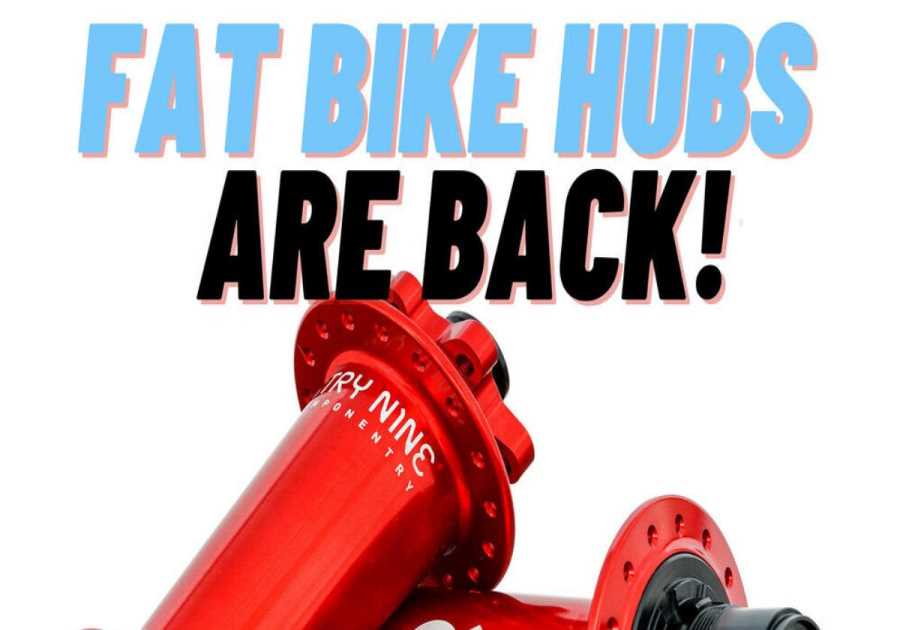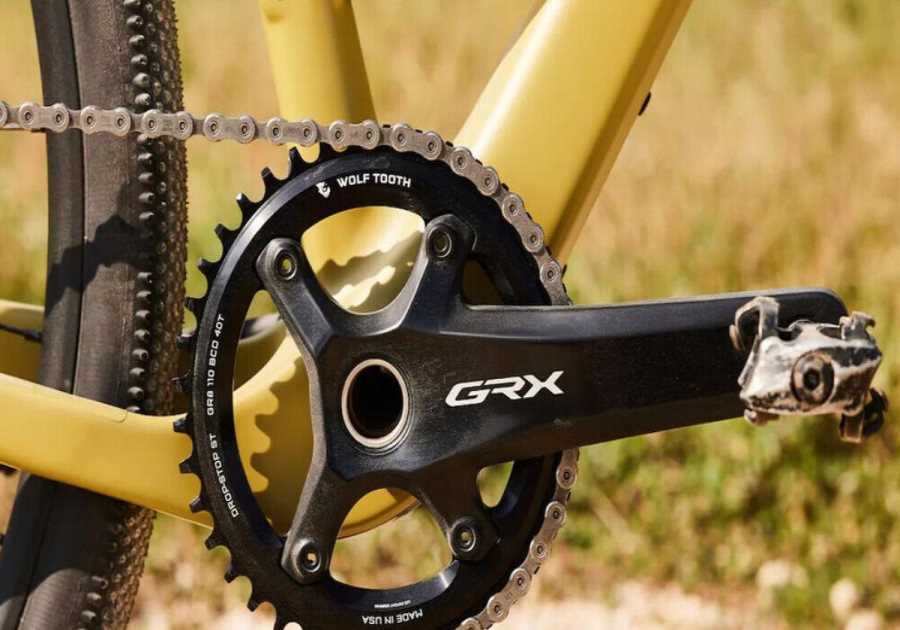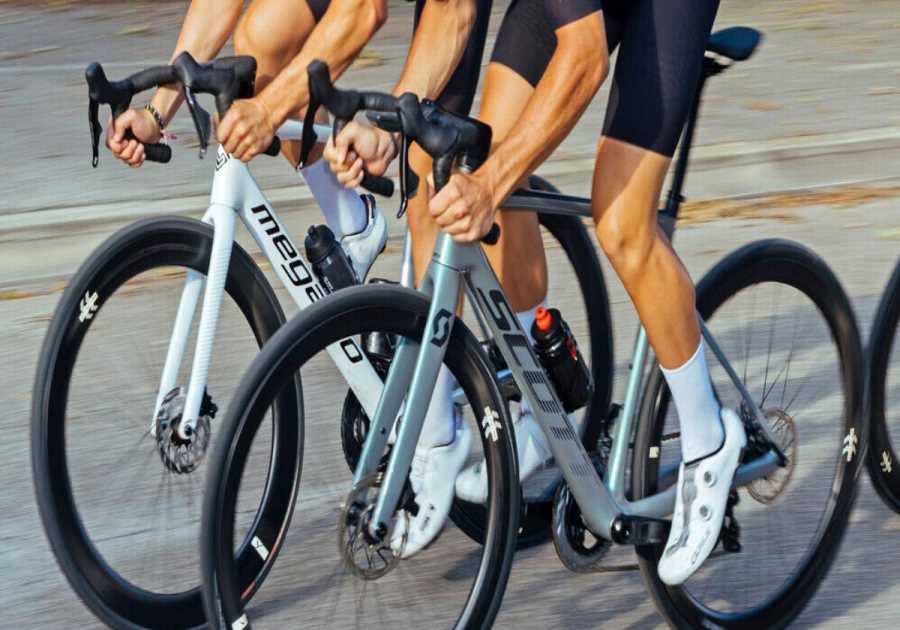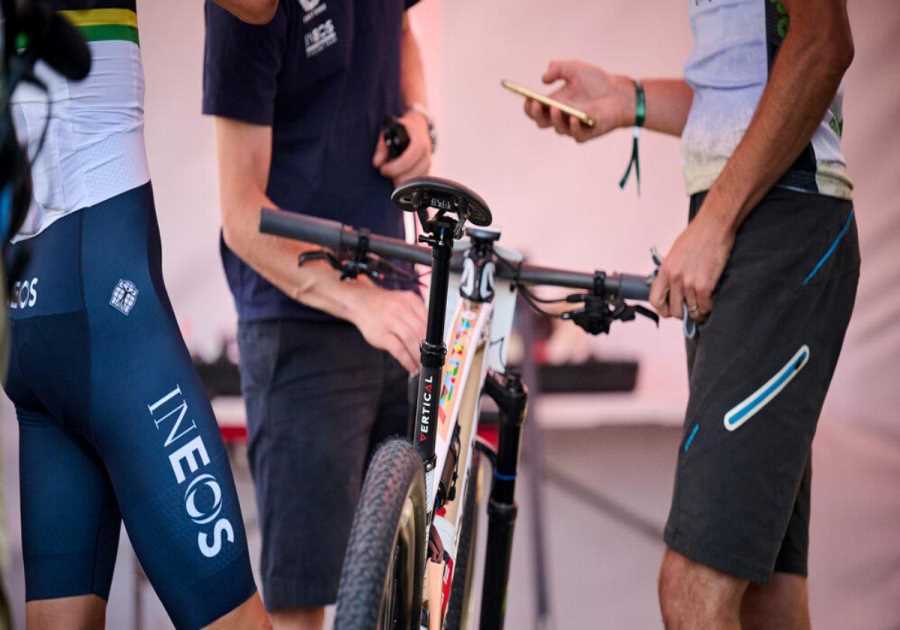HOSTED BY: https://fatmtnbike.com
TODAY'S RIDE
Revamped Roval Rapide CLX II and Alpinist CLX II wheels are tubeless at last
It was just three years ago that Specialized and Roval were all in on tubeless for the road, saying the technology was faster, grippier, more reliable, and just performed better overall than tube-type clinchers or tubulars. And it was a story the brands stuck to consistently, in both the consumer and pro-racing spheres. That is, until the launch of the Roval Rapide CLX and Alpinist CLX wheels in 2020.
At the time, Roval’s explanation was essentially that offering tubeless capability just made the wheels too heavy.
“We evaluate everything in a holistic perspective in the light of what’s best for the rider we’re aiming to serve,” the brand said at the time. “For now, the performance balance tips in favor of tube-type wheel/tire systems for the performance road rider. We will continue working to realize the benefits of tubeless road systems while reducing the drawbacks.”
Those wheels were shipped with factory-installed rim tape that was conspicuously marked as not being suitable for tubeless use, and Roval was quite clear in its communications that the wheels were being sold as tube-type. However, it was also impossible not to conclude that the tire bed on the new Rapide CLX and Alpinist CLX wheels was intended at some point to be tubeless-compatible.
Two years later, Roval has now debuted the updated Rapide CLX II and Alpinist CLX II wheels. They’re practically indistinguishable from the original ones, wearing the exact same external rim shapes, the same spoking patterns, and the aluminum hubs that use the same DT Swiss Ratchet EXP guts as before.
They’re also slightly heavier (sort of — read on), and — as expected in this economic environment — a little more expensive.
Only these new ones are now officially tubeless-compatible, while the previous-generation ones still aren’t.
What gives?
The Sagan incident
In December 2019, not long before the wheels were set to launch, Peter Sagan and the rest of his Bora-Hansgrohe team were at a training camp. And Sagan being Sagan, he opted to straightline a roundabout instead of going all the way around (it’s both quicker and more fun to jump the curb, after all). Sagan mistimed his bunnyhop and nailed the concrete with his front wheel, but instead of just pinch-flatting his tubeless tire and/or cracking the rim, the tire blew off of the rim, and the entire sidewall of his new Roval Alpinist CLX wheel blew out with it in spectacular fashion.
In other words, the wheel quite literally exploded. Sadly, we don’t have a copy of the image to share, but having at least seen it, I can verify that the failure was indeed quite spectacular.
Sagan was thankfully able to safely come to a stop, but the damage was done, and in more ways than one. It was a hard impact for sure, but it still wasn’t one that should have resulted in such a catastrophic failure.
Not everyone is as adept at bike handling as Peter Sagan, of course, and Roval supposedly didn’t want to take a chance that a similar incident could end up with much more disastrous consequences. Some immediate lab testing provided a little more clarity, though not any true answers or solutions. But since those tests did at least firmly demonstrate that the wheels were safe to run with inner tubes, Roval made the decision to go forward with the launch, but with the then-perplexing caveat that that they were only to be run with inner tubes.
The buying public (not to mention the media) was rightfully confused, but it was also a bigger deal for Roval’s two major sponsored teams, Bora-Hansgrohe and Deceuninck-QuickStep. All of their off-season testing was done with the wheels set up tubeless, and when the decision was communicated internally, both teams were suddenly faced with a major upheaval in a critical segment of its equipment strategy with the entirety of the racing season still ahead.
“There were uncomfortable meetings,” said Ben Edwards, co-leader of Specialized’s global marketing team.
Bora-Hansgrohe opted to revert back to previous-generation Roval tubeless wheels and tubular setups, but Deceuninck-QuickStep had reportedly already grown accustomed to the new wheels’ other performance advantages, and decided to go with conventional clincher tires and latex inner tubes. Much to Roval’s delight, the team still racked up a whole bunch of race wins, however those came with some major equipment failures, too, which only added to the background murmurs that something was off.
Seeking answers in the lab
Roval at least had some sense early on about the nature of the problem they were trying to solve. At its essence, an inflated tubeless tire mounted on a tubeless rim is basically a two-piece pressure vessel. And as any good engineer can tell you, a properly designed pressure vessel should fail in a ductile manner, not a brittle one.
In other words, any structural failure should ideally occur gradually and with a controlled release of the pressure, not a sudden explosion like what happened to Sagan at training camp, which is particularly challenging with carbon fiber rims given their inherently brittle nature.
First and foremost, Roval says the most important task was replicating the failure and making decisions on what riders considered to be reasonable vs. unreasonable impacts (in both speed and size), and reasonable vs. unreasonable outcomes. What Roval ended up with was an instrumented steel block that was anchored into the ground at various heights to mimic the squared-off shape of a concrete curb. The shape concentrated the damage on the rim itself (whereas a blunter shape would highlight overall wheel strength), while the embedded sensors could measure in real-time the transmitted forces when test riders hit them at about 32 km/h (20 mph). That block was then used as the striker on the company’s impact sled so that tests could be performed in a more controlled environment in the lab.
Replicating the impact in the lab seems obvious enough, but one aspect was more surprising.
Wheel companies conduct a dizzying array of lab tests, and generally speaking, carbon wheels are remarkably durable these days. However, to the best of my knowledge, most of this testing is done with inner tubes fitted regardless of how the wheel is intended to be used.
Much of this is due to practicality. Even as #teamtubeless devotees will admit, tubeless setups are messier and slower than inner tubes, and they can occasionally be stubborn to achieve a stable pressure over time. None of those things are conducive to lab testing; hence the inner tubes.
According to Roval, road wheel failure modes change depending on whether an inner tube is installed. Sagan’s wheel failure prompted engineers to do all of their testing tubeless, and whereas the first-generation wheels passed Specialized’s in-house test standards, they didn’t pass the updated protocol.
“You could crack the rim, and just having the tube, that little bit of extra material, slows the air down enough and distributes the force just enough,” explained Roval wheel category leader Chris Wehan. “So instead of that force trying to push that crack apart, the air goes somewhere else and dissipates.”
Roval says that when the first-generation Rapide CLX and Alpinist CLX wheels were tested with the new protocol and set up tubeless, Sagan’s failure could be replicated in the lab. Cracks would initiate in the tire bed, but then also propagate there, and since those rims were made so light, what resulted was a sudden sidewall blowout. The pressure vessel blew apart.
The fix
According to Wehan, the tricky part was redesigning the rims so that when subjected to a sufficient impact force, cracks developed further down in the rim structure where there was less risk of a pressure-related explosion. When all was said and done, Wehan — together with Roval engineering manager Jeff Meyer and Roval R&D engineering developer Victor Robles — said his team tested about 150 different lay-up iterations and 1,000 rims over the course of 21 months.
“What was happening was not in the aero structure; it’s in the tire bed,” he explained. “If you hit [the wheel] really hard, instead of it cracking in the tire bed, we want to send the energy farther down and make the spoke bed the weakest point. That way, if that snaps, you still have a whole bunch of spokes that will allow you to come to a complete stop.”
Unfortunately, moving the place where cracks form involved adding weight, to the tune of about 50 g per rim. However, the actual total weight gain is more modest thanks to changes in the hubs.
Actual weight of a set of first-generation Rapide CLX wheels was just 1,420 g, including rim tape, but a set of second-generation Rapide CLX II wheels tips the scales at 1,483 g (807 g rear, 676 g front, pre-taped). Likewise, actual weight for the first-generation Alpinist CLX was 1,248 g, whereas a second-generation set comes in slightly lighter at 1,234 g (670 g rear, 564 g front, pre-taped).
External rim dimensions haven’t changed. The Rapide CLX II front rim still boasts a 35 mm outer width and 51 mm depth with a notably bulbous shape that’s both extremely speedy in the wind tunnel and notably stable in crosswinds. The pointier rear rim is 30 mm-wide and 60 mm deep since stability isn’t as important back there. The Alpinist CLX II uses the same rim front and rear, with both featuring a 26.3 mm outer width and 33 mm depth for a more versatile balance of aerodynamic efficiency and handling ease.
Both wheelsets have 21 mm-wide inner widths, and while they’re still hooked as before, the tire bed diameter has been reduced by 1.4 mm for easier tire installation, while still being ETRTO-compliant. One nice bonus of the increased rim weight is that both wheels are now rated for riders weighing up to 125 kg (275 lb) — an increase of 16 kg (35 lb).
As for the hubs, the updates to the Rapide CLX II are pretty minimal, with the hub shells still wearing the same aero-minded profile as before, but with more aggressive machining at the splined rotor interface. The Alpinist CLX II, on the other hand, gets a completely new hubset that offsets the 100 g weight gain of the new rims entirely. Both rear hubs still use DT Swiss Ratchet EXP internals, and all of the hubs now rotate on Sinc hybrid ceramic bearings.
Naturally — this is Specialized Roval we’re talking about here — the new wheels are claimed to be faster than the old ones, owing entirely to the switch to tubeless. According to Specialized tire product manager Oliver Kiesel, the reduced rolling resistance saves 3.5 watts of rider energy relative to the previous tube-type setup when traveling at 40 km/h (25 mph). And it’s also perhaps worth noting that Roval-sponsored teams are now back on tubeless setups.
Retail price has climbed slightly, from US$2,500 / AU$3,600 / £1,800 / €2,600 up to US$2,800 / AU$4,400 / £TBC / €2,600 (the Alpinist CLX II is a bit less expensive in the US at US$2,650).
Bigger implications and lingering questions
OK, so Roval identified a problem with those earlier wheels and, at least on the surface, handled it in a seemingly respectable manner that didn’t put people at risk (assuming they heeded the warning to not run them tubeless). And having now spent a fair chunk of time on the updated wheels, I can say they’re mighty impressive: tangibly fast, surprisingly light, and wonderfully easy to manage in swirling conditions.
However, the whole situation still generates all sorts of questions.
For one, if Roval never tested wheels in a tubeless setup, what about earlier tubeless-compatible wheels? Part of Roval’s epic investigation included using the new protocol to re-test older Roval wheels, like the CLX 32, 50, and 64. According to Wehan, none of those turned out to be problematic overall, though he admits a review of past warranty claims revealed a handful of cases that could have applied.
And what about mountain bike wheels?
Those apparently aren’t an issue, either. According to Robles, it boils down to a concept called “thermodynamic availability”. In other words, it’s all about pressure. Whereas tubeless mountain bike tires have a lot more volume, they’re also inflated to much lower pressures.
“Road systems have 2-3 times more energy to quickly dissipate,” he said. “Pressure determines everything. Pressure protects again pinching the casing, but it also has more potential energy if the rim cracks.”
What about customers who bought the first-generation wheels, who perhaps were hoping those wheels might eventually be certified for tubeless use?
“We always aim high and intend to deliver every rider benefit we can, but regardless of development wheels or goals, those wheels were launched as tube type, and we feel that was clearly called out at launch,” Edwards explained. “As we know, most riders at that time were riding with tubes, and I think we proved our wheels were the fastest system the last two years, and those riders were stoked. We’re super proud of them.
“Over the last two years, more riders have embraced road tubeless, and many of those riders chose different wheels, but we’ve made no secret of our belief in tubeless and our continued development,” he continued. “We’re now stoked to bring riders all the speed and ride quality of the Rapide and Alpinist in a tubeless-done-right package with the second-gen wheels.
“No question, as products develop, they usually get better. It’s true of iPhones, cars, and bikes. We believe it’s true of these wheels, too. We hope riders on the first-gen wheels enjoyed the hell out of them and continue to do so; they are fast! For those riders who were waiting for Roval to develop a tubeless solution, we now have new amazing wheels.”
A bigger potential issue is other brands that offer tubeless-compatible carbon road wheels. After all, if the norm within the industry — both at Roval and elsewhere — is to test tubeless wheels with inner tubes installed, doesn’t that imply this catastrophic failure mode could apply to countless other wheels, too?
Wehan wouldn’t explicitly outline the findings, but he said Roval did test some other makes and models of tubeless-compatible carbon road wheels with seemingly mixed results. More critical than naming names in his opinion, however, was communicating the company’s findings directly with other brands as soon as possible, and also proposing the new protocol as an updated ASTM standard so that other brands can implement the same test.
“The important thing to know is when we proposed the ASTM standard, that was within a week or so of us coming to our new internal standard. So right when we said, ‘hey, this is what we think,’ we published it to the industry, and worked with the internal groups because we do think it’s important for everybody.”
Even if you take all of this at face value, what’s still frustrating to me is there’s almost nothing to visually tell the two generations of wheels apart. Yes, an eagle-eyed observer will recognize the change in the hubs (especially on the Alpinist CLX), and those in the know might think to look for the new pressure ratings on the rim, which now include recommendations for tubeless.
But despite now technically being called the “Rapide CLX II” and “Alpinist CLX II”, the new wheels still just say “Rapide CLX” and “Alpinist CLX” — no “II”.
“We like the clean look and feel, the simplicity of our current setup, and wanted to maintain that,” explained Edwards. “We clocked the logos for a quick and easy way for riders to tell the difference. ‘Roval’ is now at the valve, and the wheel model 90º from that. Less is more.”
As my daughter would say, “humph”.
More information can be found at www.rovalcomponents.com.





















By: James Huang
Title: Revamped Roval Rapide CLX II and Alpinist CLX II wheels are tubeless at last
Sourced From: cyclingtips.com/2022/05/roval-rapide-clx-ii-and-alpinist-clx-ii-tubeless/
Published Date: Tue, 10 May 2022 16:00:29 +0000
___________________






